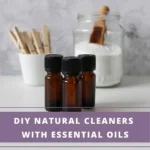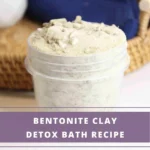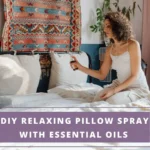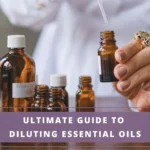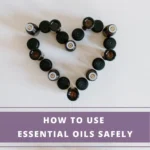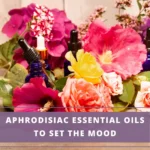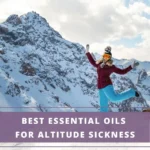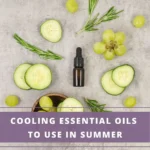As an Amazon Associate I earn from qualifying purchases. See Full Disclosure Here
When buying essential oils, it is important to know what to look for so the oils you’re buying are of the highest quality.
Essential oils are potent plant extracts that are rich in therapeutic components. They can reduce stress, lift your mood and make you feel better with just a whiff of their fragrance. They even help alleviate the symptoms of many conditions, from headaches to hangovers. But to get the therapeutic benefits, it’s absolutely crucial that you buy only the highest quality essential oils.
Essential oils vary widely in terms of quality, price, and benefits. This is because they may be grown, harvested, and distilled differently and each of these factors affects the quality and cost of the oil.
You may buy a ‘pure’ essential oil but if it was extracted from poor quality crops or harvested during the wrong season, the quality of the oil will suffer.
This ultimate guide to buying essential oils will help you understand what to look for, what questions to ask, and why these factors are so important.
10 Tips For Buying Essential Oils
 1. Research the Brand
1. Research the Brand
This is the absolute first thing you should do before buying essential oils. The single best way to ensure that you’re buying the best quality essential oil is by only buying from a reputed brand.
There are several ways you can research the reputation of any essential oil brand.
Go to the website and read about the company. Who is behind the brand? Is it a certified Aromatherapist? What certifications does the company have? Does the company practice sustainable and cruelty-free practices? All of these factors speak volumes about the type of company you’re buying from.
Other than the website, check third-party reviews and read what they have to say about the company. Steer clear of companies that have too many bad reviews about the quality of the oils or their customer service.
Why it’s important to research the brand: There are way too many spurious companies trying to cash in on the popularity of aromatherapy with low-quality oils. Researching the brand is key to identifying reputed essential oil brands. A company that values its integrity will not compromise on the quality of the essential oils they market.
Scroll down to see which are the top three essential oil brands that I use and recommend.
2. Take a Look at The Packaging
Essential oils must be stored in dark-colored glass bottles to preserve their quality. Both features are equally important – the bottle must be made of glass and it must be dark-colored. This is non-negotiable. Here’s why.
Pure essential oils are highly concentrated. When stored in plastic containers, they react with the plastic and dissolve it slowly over time, tainting the essential oil content. Glass is impervious to eroding and is a safe choice for storing essential oils.
Exposure to light causes the components of essential oils to degrade over time. Storing them in dark-colored glass bottles shields the oil from excessive light exposure. This protects the precious components of the oil and prevents the oil from premature degradation.
Here’s why checking the essential oil packaging is important – A reputed company will always sell essential oils in dark amber, cobalt blue, or dark green glass bottles with a fitted lid. It’s best to avoid buying oils that are sold in clear glass or plastic containers or oils that come with a dropper. A plastic dropper will also cause some degradation of the oil.
3. Read the Label
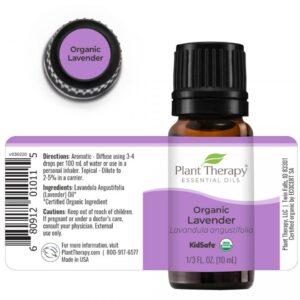 The labels on essential oil bottles hold crucial information about the contents within.
The labels on essential oil bottles hold crucial information about the contents within.
Two of the most important things to look for in the label on an essential oil bottle are the common name and the Latin or botanical name of the plant from which the oil is extracted.
You need to know the common name so you can do further research to learn more about the benefits, uses, and risks related to that particular oil.
If the oil is being marketed as organic, does the label say it is ‘certified organic’?
Why it’s important to know the Latin name of the plant from which an oil is extracted – Some plant species such as Lavender, Eucalyptus, and Chamomile, have multiple varieties. Each of these contains different components and each offers different therapeutic properties. It’s important to know exactly which plant variety the oil was extracted from so you’re using the right one.
For example, when buying lavender essential oil, the label shouldn’t just say “lavender”. It should specify which of the many species of lavender the oil was extracted from. The aroma and therapeutic properties of Lavandula angustifolia are very different from that of Lavandula latifolia.
4. Check the product page on the manufacturer’s website
 This tip picks up where the earlier one leaves off. Essential oil labels can be so small it’s difficult to fit all the properties in that space. Even if it does have all the information, it’s difficult to read.
This tip picks up where the earlier one leaves off. Essential oil labels can be so small it’s difficult to fit all the properties in that space. Even if it does have all the information, it’s difficult to read.
Reading the product page for that essential oil will give you all the information you need and it will be laid out in a way that’s much easier to read too.
The product page for any essential oil should contain these details:
– Common name
– Botanical name
– Country of origin
– Extraction method
– Plant Part
– Strength of aroma
– Aromatic Scent
– Blends well with
– Shelf life
– Cautions
– Safety Data Sheet
This is the perfect product page for any essential oil. It even includes the safety data sheet and whether it is safe for kids, pregnant women, nursing mothers, and pups and ponies.
5. Watch out for these terms
There are a few terms you should keep an eye out for when reading the label or product page of any essential oil.
Fragrance oil or Perfume oil – These are nothing but a combination of chemicals that smell good. They are NOT essential oils and do not have any therapeutic or restorative properties. Some may contain a small amount of essential oil but the major component will be some synthetic chemical.
Aromatherapy oil – There’s no such thing as aromatherapy oil. Essential oils are used for aromatherapy but there is no aromatherapy oil. Aromatherapy is the science of healing by smell and essential oils are a product that facilitate healing by aromatherapy.
Nature identical oil – The term nature identical oil is intended to distract the reader from the word ‘identical’ and focus instead on the word nature. The fact is, nature-identical and natural mean two completely different things.
If any of the above terms are mentioned anywhere in the description of the oil, strike that brand off your list.
Why the terminology used to describe essential oils is important – All the terms above are misleading. Using them may not be outright deceptive but they are intentionally used to mislead the reader. They sound ‘natural’ but in fact they don’t mean anything at all.
6. Look for Any Mention of Additives
Pure essential oils do not and should not contain any type of additives. They should not contain preservatives to prolong their shelf life, chemicals to boost their efficacy, or any other additional ingredient. They should contain 100% pure essential oil extract.
Reputed companies adhere to very stringent measures from start to finish. They choose plants from select growers and ensure that the harvesting and transportation to the steam distillery is carried out under proper conditions. The extract process and bottling are then carried out while maintaining optimum conditions and under very strict standards.
Essential oils that are extracted under such rigid quality control are 100% pure and will last for a long time. They don’t need additives in the form of preservatives or boosting agents.
Essential oils that contain any additive are not pure and are not suitable for therapeutic use.
7. Understand the Meaning of Therapeutic Grade
There is some debate over the terms ‘therapeutic grade’ and ‘aromatherapy grade’. Many manufacturers use the term when describing their essential oils. But there is in fact no governmental regulating body that grades essential oils or certifies them as “therapeutic grade” or “aromatherapy grade” essential oils really don’t exist.
To clarify the above, not all companies use these terms with any intention to deceive. These terms have no legal meaning and the brand is not breaking any rule by using them. It’s just important to understand that therapeutic doesn’t necessarily mean medicinal. Understanding this distinction will help to keep your expectations realistic.
8. Look for Third Party Testing
There are independent, third-party organizations that perform blind testing of essential oils to ensure that they are 100% pure and high quality. Each batch of oils is numbered and evaluated for purity, potency, and other factors. Oils that pass the test get a seal of approval.
Companies that get their essential oils tested by an independent, non-biased third party will proudly announce this on their website. It’s like the ultimate seal of approval. Buying from these companies is a safe bet.
9. Compare Prices Of Individual Essential Oils
Here’s where things can get a little tricky. Prices vary not just from one brand to another but even from one essential oil to another.
Several factors go into pricing essential oils, from the harvesting and extraction techniques to the oil itself as well as the brand.
The one fact that remains constant is that essential oils are expensive. That’s because they are concentrated extracts of various plant parts. It takes a lot of the plant part to obtain a single drop of essential oil, which explains the high cost. Some oils require extraordinarily large amounts of raw material to obtain a single drop.
To get some perspective on the price, here’s how much raw material is needed to extract a few common essential oils.
It requires approximately:
– 1 pound of lavender flowers to obtain just 5 ml lavender essential oil.
– 242,000 rose petals to distill 5 ml rose essential oil
– 63 pounds of Melissa plant to distill 5 ml Melissa essential oil
– 17 lemons to extract 5 ml lemon essential oil
This gives you some idea as to why the prices of some essential oils such as Rose are so much more expensive than other oils such as Lavender and Lemon.
Never buy from companies that sell all their essential oils for the same price. And if you find a rock-bottom price for an expensive essential oil, it isn’t pure. Period. Don’t buy it.
There are ways that you can save money on essential oils. I will have an article on that shortly.
10. Test the Quality by Buying An Essential Oil Sampler Set
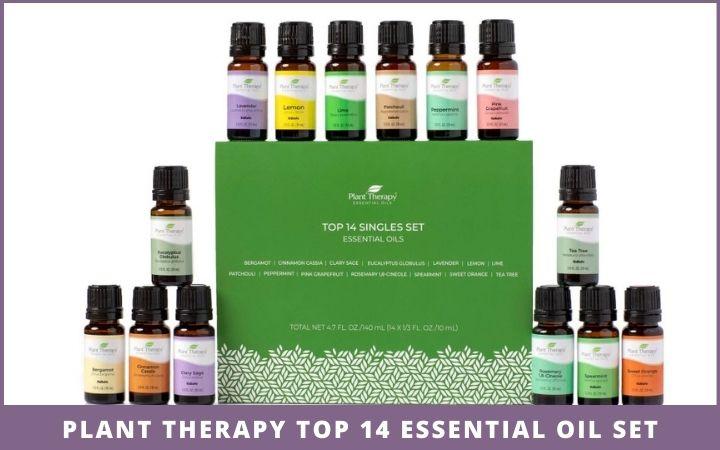 I added this last tip because it applied to me when I was just getting started with aromatherapy. I read tips and guides about buying essential oils but they were always another person’s opinion. I wanted to test it out for myself.
I added this last tip because it applied to me when I was just getting started with aromatherapy. I read tips and guides about buying essential oils but they were always another person’s opinion. I wanted to test it out for myself.
After researching some of the top essential oil brands, I settled on Plant Therapy and ordered this Top 14 essential oil sampler set. This was a great way for me to personally test the aroma of each essential oil. I used them individually in my diffuser and then experimented with blends and other DIY projects. I was really happy with the results and have expanded my collection of Plant Therapy oils over the years.
Use this tip and buy an essential oil sampler set from the brand that you think is best suited for you. I highly recommend these essential oils brands. They tick all the boxes mentioned in my guide to buying essential oils.
Plant Therapy – Read my in-depth Plant Therapy Essential Oils Review to see why this is my #1 recommended brand for buying essential oils.
DoTerra
Barefut Oils
Edens Garden
DoTerra
Mountain Rose Herbs
Aura Cacia
Your next steps: Click on the links and explore the essential oil brands mentioned above. Choose one and order an essential oil sampler set or even just buy a couple of essential oil bottles to test out the quality before you buy more.
Ideas For Using Essential Oils
You’ll find lots of ideas for using essential oils on my site. Here are a few to get you started:
How to Use A Diffuser For Essential Oils
25 Ways To Use Essential Oils Without A Diffuser
How To Use Essential Oils In The Bath
How To Use Essential Oils In The Shower
Lots Of Diffuser Blend Recipes
Related Reads:
How to Store Essential Oils To Maximize Shelf Life
Plant Therapy Top 14 Essential Oil Set – A great bargain with 14 top-quality essential oils at a reasonable price.
 Disclaimer: This information is not intended to serve as medical advice. Please consult your doctor before using any natural medication or if you experience any unusual symptoms. See Full Disclaimer here.
Disclaimer: This information is not intended to serve as medical advice. Please consult your doctor before using any natural medication or if you experience any unusual symptoms. See Full Disclaimer here.


